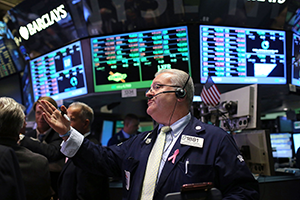There are financial markets located throughout the world. Some are larger than others and represent more of the global economy. However, many countries that have lagged behind the rest of the world economically have their own emerging markets. In Bangladesh, this is the case with their primary securities market being the Dhaka stock exchange. This market has recently seen a bubble collapse similar to the one experienced by US markets in 2009 and 2010. This has left many people wondering what went wrong with the Dhaka stock exchange.
The History
This market actually traces its origins back to the incorporation of the East Pakistan Stock Exchange Association Ltd in 1954. Actual trading did not begin until 1956. The name was changed by removing the word “Association” in June of 1962. In May of 1964, the name Dhaka Stock Exchange was adopted. Trade was halted in 1971 and resumed in Bangladesh 5 years later.
The market experienced a crash in 1996 when bullish investors forced stock prices to rise well beyond their actual value and created a bubble that burst. The same thing has happened again in 2010.
The Growth in Last Few Years
From 2003 to March 2010, this market has experienced steady growth in market capitalisation and share prices. On the surface, this looks like a positive factor. To a certain extent, this is true. The market fundamentals have remained solid with steady growth until February of 2010. Then, the market began to experience a sudden surge in stock prices and market capitalisation that was not supported by the fundamentals.
A portion of this can be blamed on an exaggerated increase in the market index that resulted from the addition of Grameen Phone IPO. However, this only explains a small portion of the surge.
Putting this growth into perspective is important to realising what happened to the market. At the end of 2003, the total market capitalisation was a mere 1.7 billion US dollars. Then a bull run began in the market that has resulted in total market capitalisation of 34.2 Billion US Dollars.
Turnover, total stock sales per day has also seen an incredible increase. In 2003, total turnover was only Tk 140 million. In February of 2010, this figure had increased ten thousand percent to Tk 13.2 billion.
The Crash of Dhaka Stock Exchange
What caused the crash in this market? A sharp increase on the demand side unsupported by fundamental analysis of the stocks being traded lead to incredibly exaggerated prices being paid for stocks that had an actual value of less than half the price per share.
Traders allowing emotions to guide them rather than study of fundamental market indicators created a market in which investors could not see anything but gains in value in the near future.
A large number of foreign investors entering the market for the purpose of taking as much profit as possible contributed a great deal to this problem. It was magnified when these foreign investors began selling off shares to take their profits and pull their money out of the market.
In the end, domestic mutual fund managers and foreign investors began to fear a market correction looming in the future and sold off as many shares as possible in order to hold their assets as cash until this correction took place.
All of the stocks showed extremely high P/E ratios. While a high ratio can be an indicator of healthy economic growth, Ratios reaching extremely high levels should have been a warning sign that stock prices were becoming exaggerated beyond reason.
A Lesson for Investors in Other Emerging Markets
There are several emerging markets scattered around the world. Most of these are experiencing positive growth, indicating that the economies of these countries are improving.
The primary lesson investors in these markets should learn from the Dhaka example is that allowing emotions to rule one’s decisions can create a falsely inflated market price for shares that are unsupported by the value of the companies they represent.
Investors must step back and examine the fundamentals behind the stock values and assure themselves that they are getting an actual value for their money. The P/E ratio is an excellent example of a method of calculating actual value of stocks. Ratios of 1 or more can indicate a company experiencing positive economic growth. However, if these ratios rise beyond a certain amount, this can be a warning sign that demand has become exaggerated and that share prices are being pushed unrealistically high.
As with all major financial markets, the Dhaka stock exchange will recover from the recent crash. This may not help the vast number of investors who lost huge amounts of money when the market corrected itself. However, it serves as an example to traders in other emerging markets of what can happen when emotions rule the day rather than fundamental study and wise investment choices.

